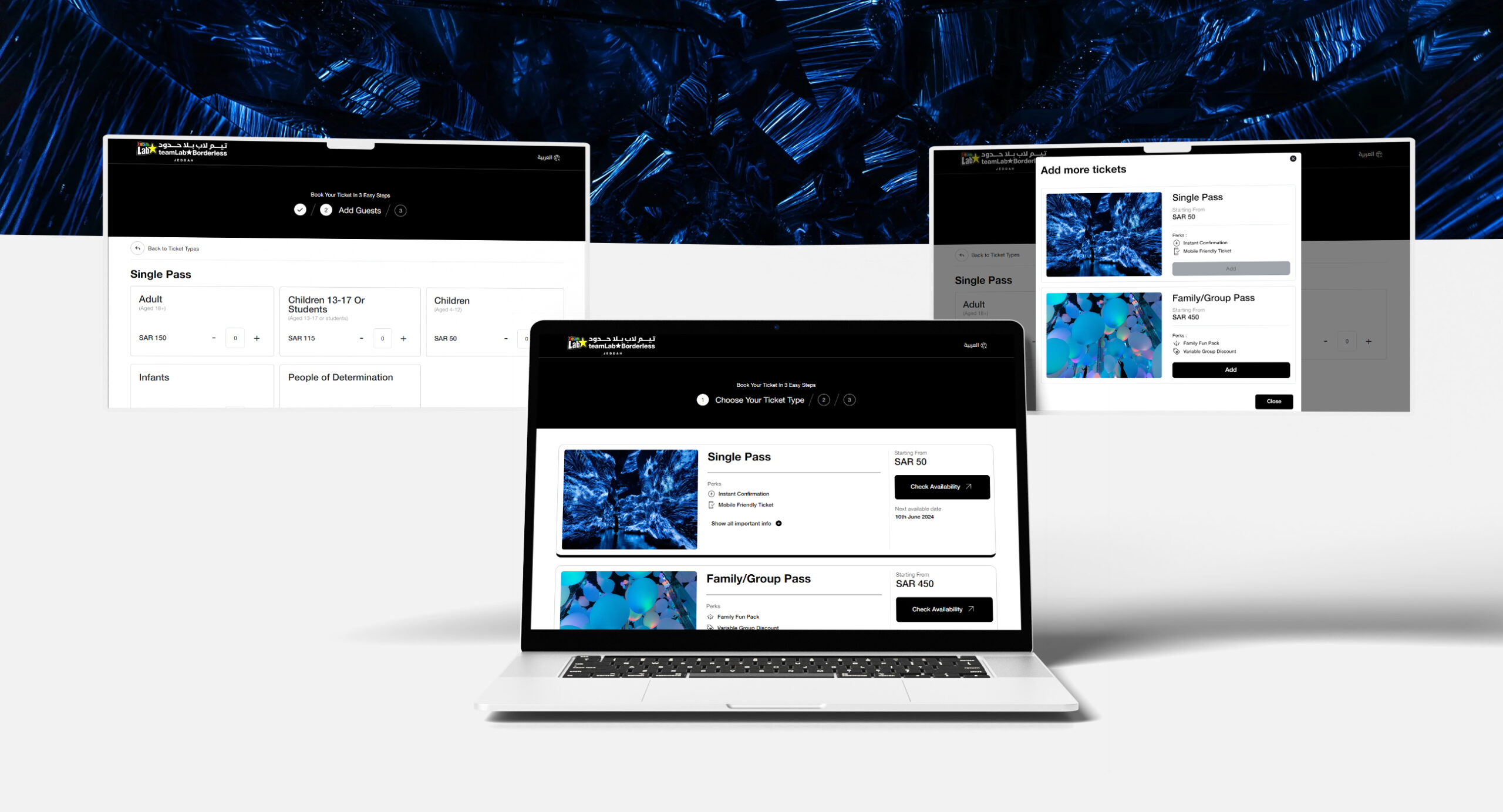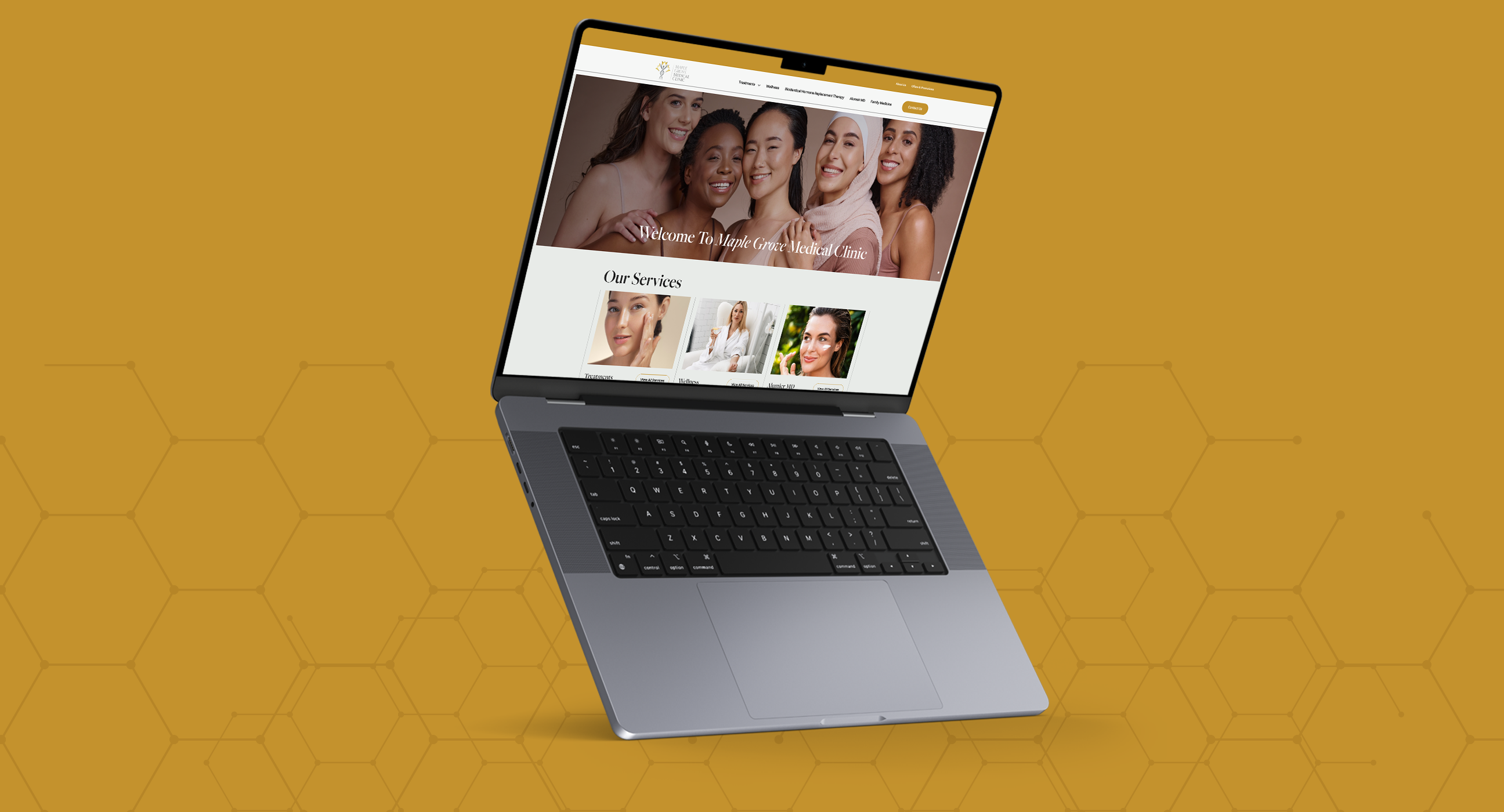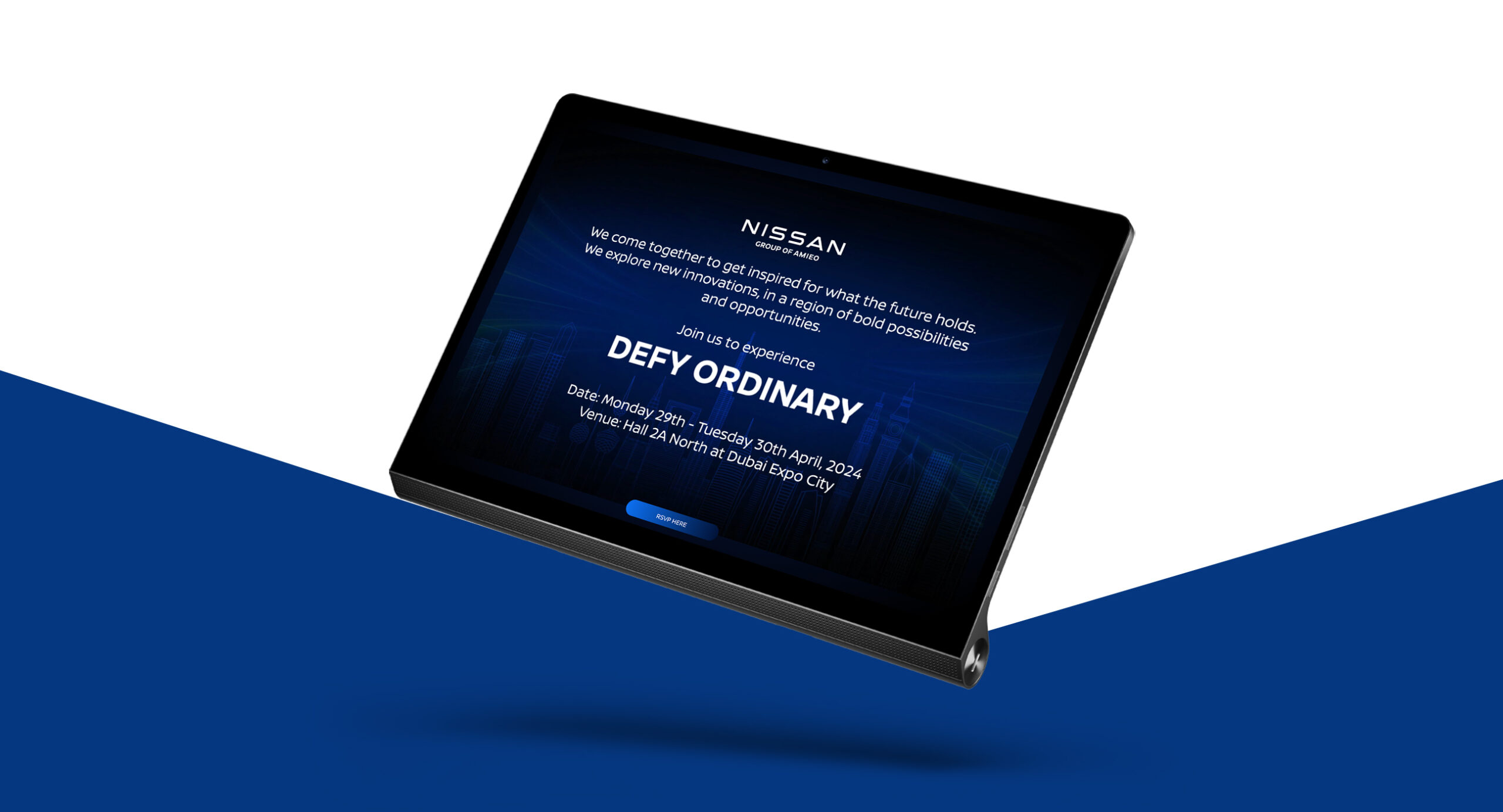Augmented Reality (AR) mixes real-life and digital information to change how we see and interact with the world. Whether you’re interested in technology or want to use AR in business, AR can make daily activities like shopping, learning, and medical care more engaging and customized.
This article will help you understand how AR works, show its practical uses, and discuss its impact in different business areas, including digital marketing.
Let’s get right to it.
What Is Augmented Reality?
Augmented reality (AR) is a technology that blends digital elements—images, sounds, or other media—into the real world. Imagine looking through your smartphone camera or special glasses and seeing computer-generated graphics that look like part of the physical environment around you.
For example, if you’re using an AR app on your phone, you might point it at a historic building and see information pop up on the screen about its history or architecture, as if it’s floating in the air in front of you. So, augmented reality enhances or “augments” your view of the world with additional digital details that aren’t there but feel like they are.
How Does AR Work?
Augmented Reality (AR) combines devices, software, and tracking mechanisms to create engaging experiences by blending the real and virtual worlds.
Let’s break it down so you can see how it all works:
Devices
Smartphones, tablets, or smart glasses use cameras and sensors to see and understand your real-world environment.
Cameras snap pictures, while sensors like accelerometers and gyroscopes track movements. This helps your device place digital images or information right in your live view, making it look as though they’re part of the real world.
Software
For all this to work, you need AR apps and platforms. Developers use ARKit from Apple or ARCore from Google to build AR apps. These platforms come with tools that help with movement tracking and scene recognition to give users a smooth AR experience in games, educational apps, or interactive marketing campaigns.
Tracking & Rendering
The real magic of AR lies in how well it can track and interact with real-world objects. Your device constantly collects data from the environment to spot surfaces and items around you. It then calculates its movement relative to these objects.
This real-time processing allows AR to overlay digital content seamlessly into your surroundings, making it interactive and responsive.
6 Exciting Ways You Can Leverage AR
Let’s see how AR is transforming marketing, gaming, education, and healthcare:
Marketing
AR changes marketing by offering interactive experiences so you can engage customers in new ways:
Virtual Product Try-Ons
Imagine trying on a new lipstick shade or checking how a shoe fits without leaving your home. AR makes this possible. Cosmetic brands let you test makeup virtually using their apps and fashion retailers provide virtual fitting rooms.
Here’s how you can leverage this technology:
- Add AR try-ons to your website and apps so they can see how items look even without wearing them.
- Listen to what your customers say to keep improving their experience.
- Get people to post their AR try-ons on social media to spread the word.
- Make sure your customer service team knows how to guide customers about how to use the AR feature.
Interactive Ads
AR isn’t just for trying things on—it also revolutionizes advertising. You can use it to scan a QR code on a billboard and see a game or animation pop up on your phone. Here’s how to get started:
- Put QR codes where they can immediately see them. This makes it easy for people to start AR experiences.
- Design relatable games for your target demographic. For instance, if your products appeal to young adults, consider fast-paced puzzle games or augmented reality scavenger hunts that encourage them to explore.
- Clearly explain how to use the AR features right next to your ads.
- Keep an eye on how people interact with your ads and tweak them to get better results.
- Collaborate with expert AR developers to make sure everything runs smoothly.
Virtual Showrooms
Ever wondered how a new chair would look in your living room or how a business setup would fit in a potential space? AR isn’t just transforming how we shop for furniture; it’s also revolutionizing how we envision commercial spaces before making big decisions.
For home furnishings, AR apps let you drop 3D models of sofas, tables, or chairs into your space to check the fit before buying. It’s like having a digital fitting room for your home decor.
You can also apply this same technology to a business brokerage firm like this one to give clients a unique experience. If you’re looking to sell a cafe, a boutique, or any small business, AR can help your clients visualize not just the space but how their future business assets—counters, equipment, or display racks—will look:
Here’s how you can do this:
- Develop an app that lets your customers easily place and move around 3D models of your products in their own spaces. Think of it as a virtual test drive for furniture.
- Use detailed and lifelike 3D product models so customers can get a realistic feel of how their business will look. The more realistic, the better they can visualize it in their space.
- Use high-quality visuals and interactive features–let your customers open drawers, change fabric colors, or even see how the light at different times of the day affects the look of the furniture.
- Promote your virtual showroom on all your channels. Social media, email newsletters, and your website are great places to start. The more people who know about it, the more will try it out.
Gaming
Augmented Reality (AR) elevates gaming to a whole new level by blending digital gameplay with the physical world around you. Here are 2 examples:
Pokémon Go
This hit game brings Pokémon characters to life in your environment. By using your smartphone’s GPS and camera, you can hunt and capture these creatures at local parks, streets, and landmarks.
What you can do: If you’re developing games, think about how you can create or participate in games that encourage physical activity and exploration. Consider the places around you and how they could turn into part of an engaging game world.
Ingress
Another game by Niantic, the creators of Pokémon Go, where players pick teams and battle for control over virtual territories at real-world locations. It combines outdoor adventure with strategic thinking.
What you can do: Use this game as inspiration to explore more of your neighborhood or travel to new places. If you are a game developer, learn how to integrate local landmarks and community spaces into your game designs.
Education
Augmented Reality (AR) transforms education by making learning more immersive and hands-on. Here’s how it’s changing the classroom:
Virtual Field Trips
Imagine taking your students to the pyramids of Egypt or the battlegrounds of the American Revolution without ever leaving the classroom. AR apps can transport students to different times and places, adding layers of information and 3D models to make history come alive.
What you can do: If you’re an educator, consider incorporating AR field trips into your lessons to make the lesson more interesting and so you can keep their attention longer.
Interactive 3D Models
For subjects that are hard to understand with textbooks alone, like science, AR can be a game-changer. Students can explore molecules or human anatomy in 3D, rotating and interacting with models to see how things work from different angles.
Take action: Use AR to bring complex concepts to life. This could be integrating 3D models into your science curriculum to help students visualize and understand challenging topics.
Here’s how to get started:
- Start by adding AR experiences as supplementary materials for complex lessons.
- Equip your teachers with the needed skills and knowledge to use AR tools effectively. This might mean organizing training sessions or workshops.
- Get students actively involved with the AR content. The more they interact, the more they’ll learn and remember.
Healthcare
Augmented Reality (AR) is making big waves in healthcare, giving crucial support to both patients and medical professionals. Here’s how it’s being used:
Anatomy Visualizations
AR apps allow students and professionals to dive into detailed 3D models of the human body. This helps doctors explain complex medical conditions to patients more clearly.
What you can do: If you’re involved in medical education or patient care, think about integrating AR into your teaching methods or consultations to make your explanations much more intuitive and engaging.
Real-time Data Display for Surgeons
During surgeries, AR can project vital data and anatomical structures directly into the surgeon’s field of view. This real-time information will guide decisions and improve outcomes.
Take action: For healthcare professionals, especially surgeons, adopting AR tools will get you the right information at the right time, right where you need it.
Beyond these, AR has practical applications for patient care as well:
AR can connect to devices that assist elderly patients, reminding them to take medications or guiding them through exercises. This technology can simplify daily routines and help keep them independent.
Product Development
If your business involves designing products, AR lets you see your product prototypes come to life right in front of you.
It lets designers overlay digital models onto physical objects so you can see how a new product will look and function without having to build a fully functional prototype first. This speeds up the whole design process, helping you catch and fix problems early so you can save time and money.
Collaborative Design
AR isn’t just about working faster; it also helps teams work better together. If your team is spread out across different locations, AR can help your team collaborate better.
Everyone can view and interact with the same digital models and notes on physical prototypes in real time, no matter where they are. This makes brainstorming and refining ideas so much easier and more productive.
By using AR, you can:
- Overlay digital designs onto physical prototypes to instantly see and assess changes.
- Allow remote team members to tweak and discuss AR models together, making teamwork seamless even from afar.
- Speed up design revisions and feedback, so decisions are made faster and designs improve quicker.
- Hold virtual meetings where it feels like everyone is working around the same table, even if they’re in different parts of the world.
Architecture
AR enhances the architecture industry by helping professionals and clients visualize projects better:
Building Visualization
If you’re an architect, imagine showing your clients a future building right on its future site, all through your phone or tablet. AR lets you overlay 3D models of buildings onto real-world locations to help your clients visualize exactly how a building will look and function in its intended environment.
Here’s what you can do: Next time you are discussing a project with a client, use AR tools to present your architectural models on the actual site. It will help them see your vision clearly and could speed up decision-making.
Interior Design
For interior designers, AR lets you show virtual models of furniture and decor right in the room they might go in. Clients no longer have to rely on imagination alone; they can see how different pieces fit together in the actual space.
What this means for you: Use AR to improve how you present design proposals. Let your clients walk around their space and see how everything looks—from sofas to wall art, they can see it all as if it’s already there to make planning and buying decisions much easier and more satisfying for your clients.
How AR Impacts Businesses & Consumers
Now let’s consider the business benefits of AR and see practical ways you can implement it.
Business Impact
Improved Customer Engagement
With augmented reality, companies now offer virtual tours so potential buyers can explore products from anywhere in the world to make it more accessible to a global market. Here’s what you can do to engage customers using AR:
- Offer interactive product demonstrations in sectors like automotive, where customers can explore car features from home.
- Use AR to show how furniture or appliances would look in a customer’s home.
- Provide immersive content that helps customers understand complex products like tech gadgets or heavy machinery. It’s one thing to read about a product’s capabilities and quite another to interact with it through AR.
- Create fun AR experiences like virtual scavenger hunts or quizzes where customers can win discounts or prizes. This engages them and adds a playful element to promotions.
- Develop marketing campaigns that use AR to tailor advertisements based on user interactions and preferences.
- Use AR to make remote attendees feel part of live events. They could virtually attend concerts, conferences, or product launches, getting a front-row experience from their living rooms.
AR has impressive tricks up its sleeve when it comes to engaging customers. In this CX statistics resource, using AR will crank up customer satisfaction and engagement. It’s super important to get customer interaction right, and AR provides innovative ways to make that happen.
Increased Productivity
Augmented Reality (AR) can make processes faster and cut down on errors.
Here’s how you can use AR to get things moving more smoothly:
- Implement AR-guided systems in your logistics operations. These can guide your warehouse staff directly to what they need, showing the quickest paths and pinpointing product locations in real time.
- Keep your staff sharp and up-to-speed with monthly training sessions on AR tools. This ensures everyone masterfully and comfortably uses it so they can make the most of the technology.
- Use AR to take quality checks to the next level. By overlaying specifications and highlighting discrepancies during inspections, AR can help you catch issues before they become costly problems.
- Develop an AR dashboard for managers to oversee operations and make informed decisions based on augmented data visualization.
Consumer Impacts
Enhanced Shopping Experience
Augmented Reality (AR) is dramatically improving the shopping experience for consumers. It adds a layer of interaction and personalization that wasn’t possible before, enhancing how shoppers view, try, and buy products.
Here are ways you can use AR to enrich the shopping journey:
- Introduce an AR feature that allows customers to customize products like cars or electronics directly from their devices. Set up an interface where they can change colors, styles, or features with just a few taps, and see the changes in real time.
- Develop an AR app that places outdoor products like camping gear or sports equipment into realistic settings. Customers can see how a tent fits into a campsite or how a basketball hoop looks in a driveway.
- Implement an AR navigation system in your stores, especially large ones, to help customers find products, deals, and promotions quickly. For instance, in health supplement stores, you can use AR to illuminate product packages on shelves, displaying health benefits or usage tips as customers pass by.
- Place AR virtual assistants in stores or on a digital product lineup like this to help customers compare products, read reviews, and get detailed product information on the spot.
- Create AR experiences that share the story behind your products—their origins, how they’re made, and the people behind them. This storytelling approach can deepen trust and foster a stronger connection with your brand.
- Provide customers with AR tools that show interactive setup instructions or maintenance tips right on their product interfaces to ensure that your products are used correctly and continue to function well.
- If you work with complex spaces or places packed with information, think about how AR could make things simpler and better for your users. This is useful for sectors that want to improve how people experience their services.
Accessible Learning
AR is making education more interactive and accessible. Here are effective ways you can weave AR into different educational settings:
- Use AR to craft customized learning experiences for students with disabilities. It can break down tough concepts with visual aids and interactive features, making learning easier and a lot more fun.
- Roll out AR simulations for medical training–a safe space where students can practice tricky procedures or diagnostics, building their skills and confidence.
- Use AR to make history lessons or literary texts come alive. Students could virtually visit ancient sites or watch scenes from Shakespeare’s plays unfold right before their eyes.
- Create AR apps for job training that mimic real-world tasks. Whether it’s fixing a car or whipping up a culinary delight, AR lets learners practice without needing a garage full of tools or a kitchen full of ingredients.
- Spice up your local museums and libraries with AR that adds layers of information to exhibits or books. Just point a device at a display to see extra details, hear related stories, or watch informative videos.
- Offer AR tools to help students tackle tough homework. Imagine turning a complex math problem into a 3D puzzle they can interact with—suddenly, homework isn’t so daunting.
- Inject AR into science classes where students can interact with 3D models of molecules or planets. Plus, these AR tools are perfect for an online course that wants to jazz things up with dynamic visuals and interactive elements.
Conclusion
Just like developing any skill, mastering augmented reality requires ongoing engagement and experimentation. The more you play around with AR and integrate it into different aspects of your business, from marketing to customer service, the bigger the impact it’s going to have on your operations and the experiences you offer your customers.
Are you ready to harness the transformative power of AR? GTECH is here to guide you through this journey. We create AR apps and content that enhance your digital presence, making it more engaging and impactful. Contact us to learn how we can transform your business through AR.
Related Post
Publications, Insights & News from GTECH


![Agumented reality [AR] bridging real and virtual world to enhance experiences](https://www.gtechme.com/wp-content/uploads/2024/07/Augmented-Reality-AR-Bridging-Real-Virtual-Worlds-For-Enhanced-Experiences-image.jpg)





